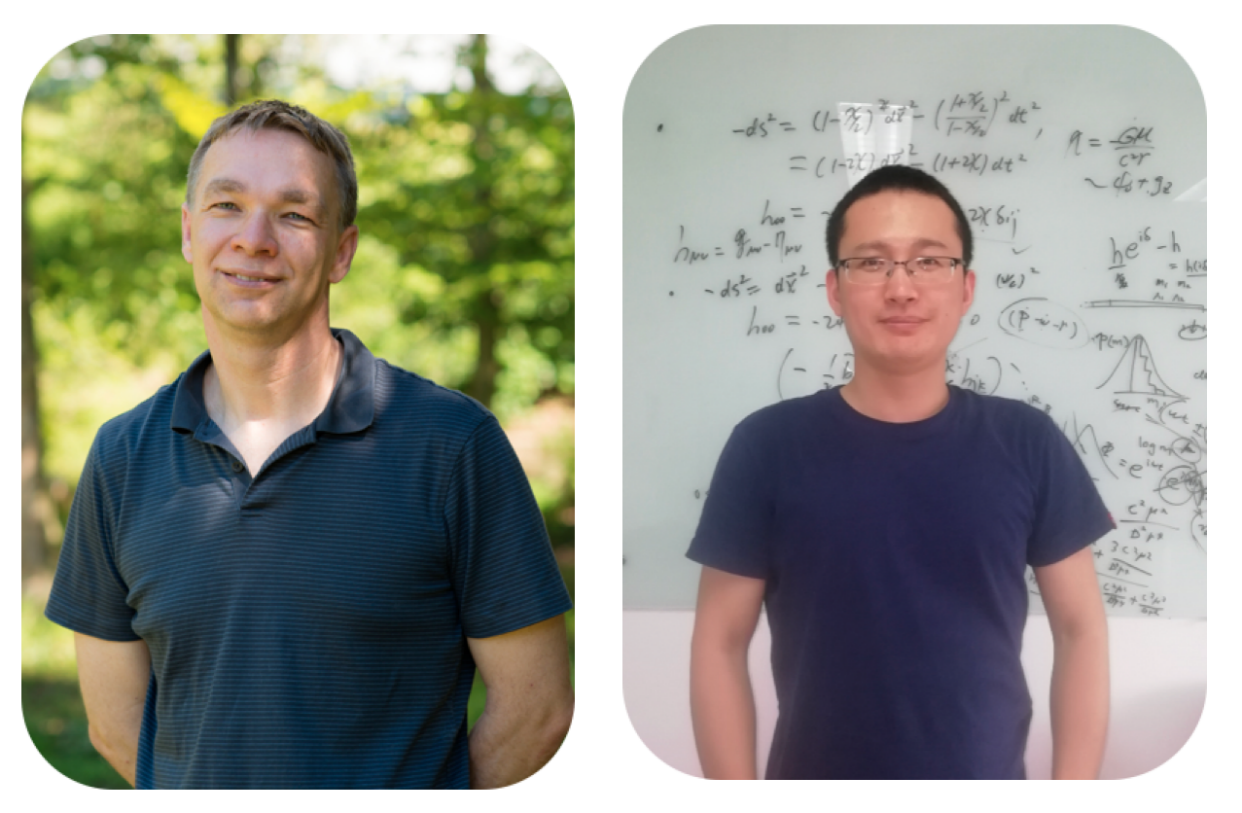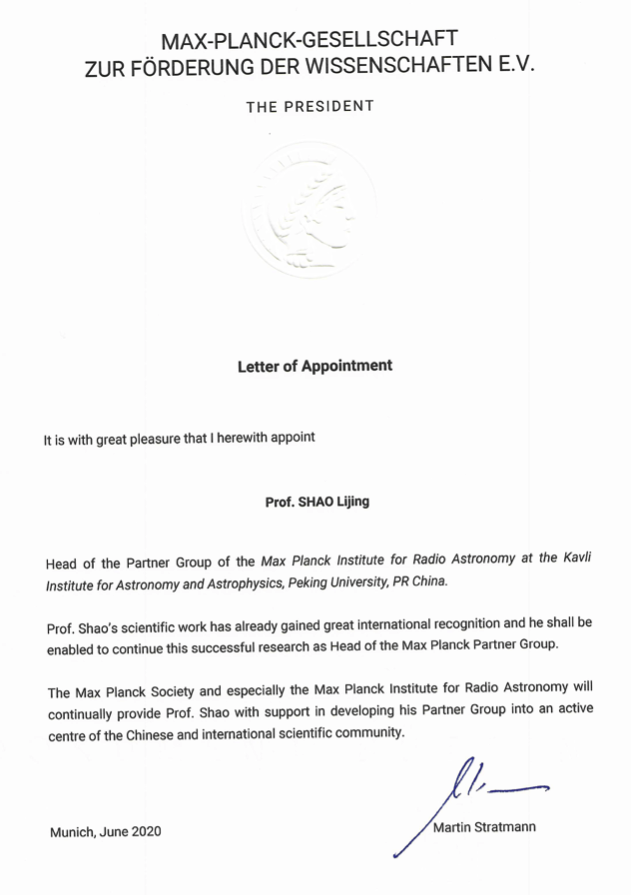In June 2020, a new Max Planck Partner Group is established, headed by Prof. Lijing Shao in the Kavli Institute for Astronomy and Astrophysics, Peking University (KIAA-PKU). The partner group is in close collaboration with the “Fundamental Physics in Radio Astronomy” group, led by Prof. Dr. Michael Kramer at the Max Planck Institute for Radio Astronomy (MPIfR) in Bonn Germany. This is the third Max Planck Partner Group established at PKU.

Figure: Prof. Michael Kramer (MPIfR) and Prof. Lijing Shao (KIAA-PKU)
The Max Planck Partner Group will be financially funded by the Max Planck Society, the Germany's premier, non-university research organization dedicated to basic research and to supporting and developing early career researchers in many disciplines. In the Letter of Appointment for Prof. Shao, the president of Max Planck Society, Martin Stratmann said, “Prof. Shao’s scientific work has already gained great international recognition and he shall be enabled to continue this successful research as Head of the Max Planck Partner Group”.

Figure: Letter of Appointment from the President of the Max Planck Society
The Max Planck Partner Groups are created by the Max Planck Society for the purpose of strengthening the ties between Max Planck Institutes and foreign research institutes and of intensifying cooperation between individual scientists through jointly conducted projects. The newly formed partner group between KIAA-PKU and MPIfR aims to synergize the current theoretical landscape in data-oriented tests of gravity theories. The collaboration will combine cutting-edge research results in testing General Relativity from
(i) quasi-stationary, strong-gravity regime with pulsar timing,
(ii) highly dynamical, strong-gravity regime with gravitational waves,
(iii) quasi-stationary, weak-gravity regime with terrestrial and Solar-system experiments, and
(iv) large-scale, globally-evolving regime with cosmology.
It will provide essential knowledge to gain a better and more complete understanding of spacetime and gravitation, and answer the question “Was Einstein Right?” from a comprehensive viewpoint.

Figure: Einstein’s general relativity describes gravitational phenomena in the Universe, including pulsating neutron stars, black hole shadows, gravitational waves, as well as our Solar system.
As envisioned in the Letter of Appointment by Stratmann, the partner group will continue great work in the field of gravitational astrophysics, and eventually develop into an active center of the Chinese and international scientific community.
PKU News: https://news.pku.edu.cn/xwzh/6501792c64c04cdd8bebfb1801d43839.htm